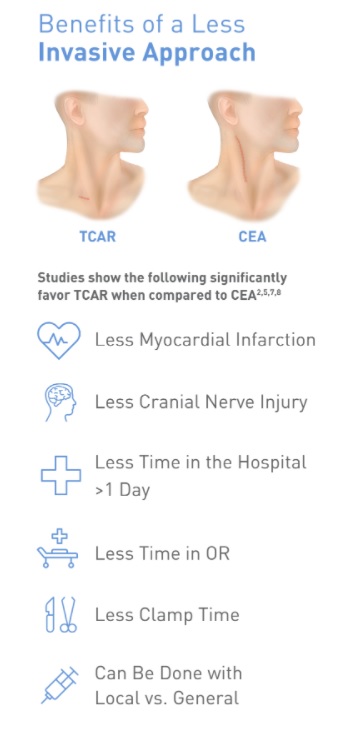
Today, I want to give insight into one of the more common questions I receive as a vascular surgeon: How do I know if I have a blood clot?
Why is this important? Here are a few facts directly from the US Center for Disease Control and Prevention (CDC).
- Anyone can develop a blood clot.
- In the United States, as many as 900,000 people are affected by DVT’s each year and
- About 100,000 people die of PE annually.
Many factors can put you at risk for a blood clot. These include:
- Major trauma
- Cancer
- Being 55 and older
- Having a personal or family history of blood clots
- Immobility (such as being on bed rest or difficulty with walking)
- Pregnancy, or using estrogen containing medications such as birth
control pills, patches, and hormone replacement therapy - Obesity
- Smoking
Almost half of all blood clots occur either during or soon after discharge from a hospital stay or following surgery. The more risk factors you have, the greater your risk of developing a blood clot will be.
The medical term for blood clot is Deep Vein Thrombosis. (DVT) Veins at their most fundamental level are blood vessels that return blood from the body (e.g. feet, hands, intestines, kidney, etc.) back to the heart. In the legs, there are two main sets of veins: superficial and deep. Deep veins are very close to the muscle and bones. Superficial veins are very close to the skin, hence the name superficial. The word thrombosis derives from the Greek word of the same spelling, thrombosis, which means curdling. In contemporary medicine thrombosis refers to the blood’s transition from liquid to solid. With all these words explained, we can see that a deep vein thrombosis refers to blood clots that are in the deep system of veins in the legs. Though superficial veins can become clotted as well, the symptoms that result are usually not as severe as a deep vein thrombosis.
Once the deep veins of the legs are blocked, blood becomes trapped in the veins below and the blood pressure in the veins increases. Consequently, the leg and foot will become swollen, blue, and tender. Patients often complain of a “tension” or “pulling” sensation in the groin, thigh, and behind the knee. These feelings of tension and pulling are often also considered as very painful. Because of the swelling there may be severe difficulty with tasks as simple as walking to the bathroom or a few feet.
PE’s: A Silent Killer
Sometimes, a piece of clot can break off from the legs and travel to the lungs. This is called pulmonary embolism or PE. Pulmonary refers to lungs and embolism refers to something that breaks off from one place and travels to another. When patients have a blood clot associated with a pulmonary embolism, they will experience:
- Shortness of breath
- Palpitations/fast heart rate, and
- In very severe cases, dizziness associated with fainting.
Recognize The Signs and Symptoms of a Blood Clot
DVT (Arm or Leg) – if you experience any of these, call your doctor as soon as possible.
- Swelling of your leg or arm
- Pain or tenderness not caused by an injury
- Skin that is warm to the touch, with swelling or pain
- Redness of the skin, with swelling or pain
PE (Lung) – if you experience any of these, seek medical attention immediately.
- Difficulty breathing
- Chest pain that worsens with a deep breath
- Coughing up blood
- Faster than normal or irregular heartbeat
Blood Clots Can Be Prevented
- Know your risks and recognize signs and symptoms.
- Tell your doctor if you have risk factors for blood clots.
- Before any surgery, talk with your doctor about blood clots.
- See your doctor as soon as you can if you do have any symptoms.
I hope this blog post can shed some light on blood clots. If you or someone you know are experiencing these types of symptoms, please do not hesitate to visit our website at www.southbayvascular.com to call our office at 408 376 3626 to schedule an appointment today!

